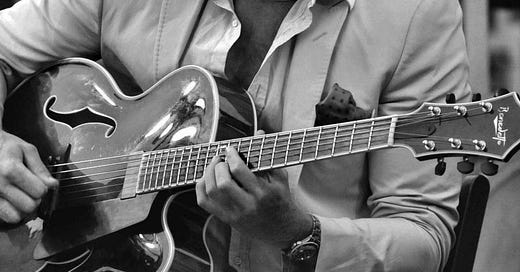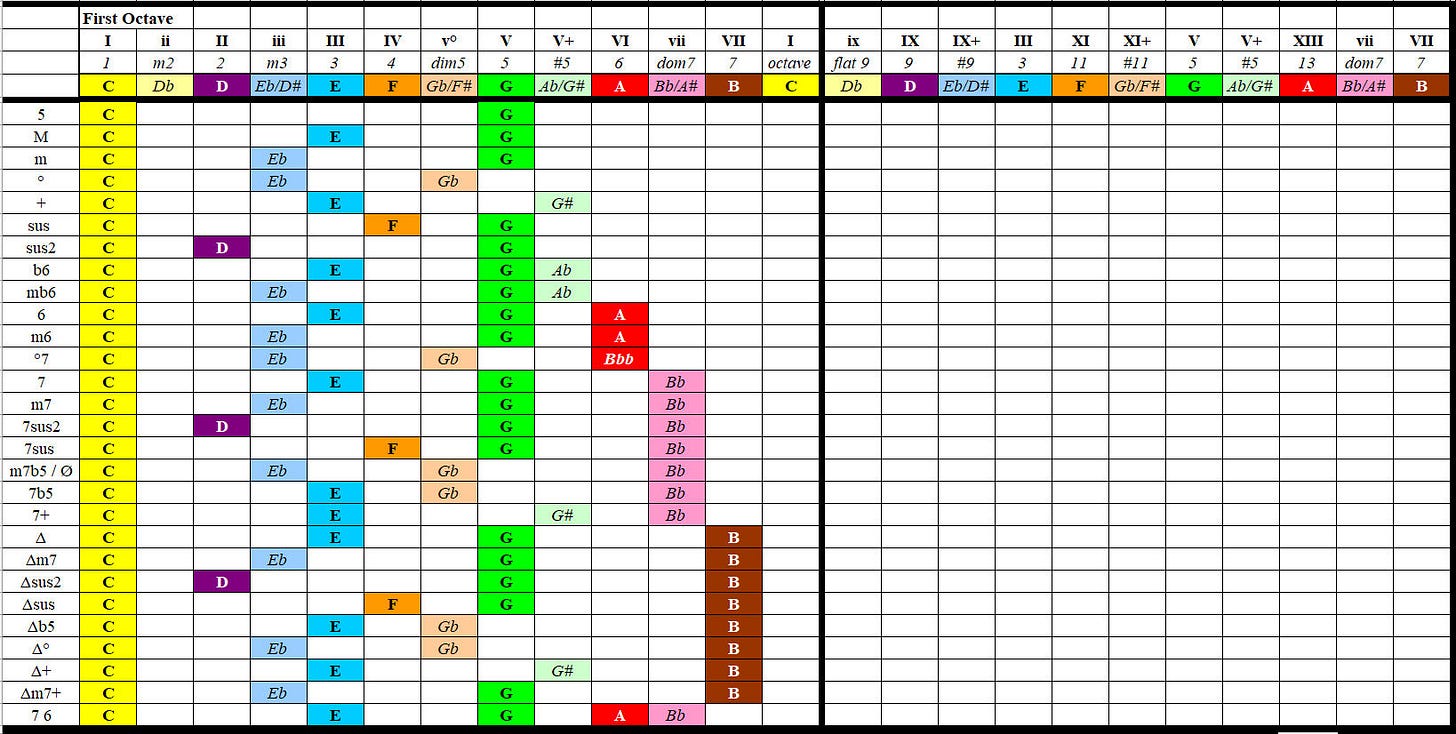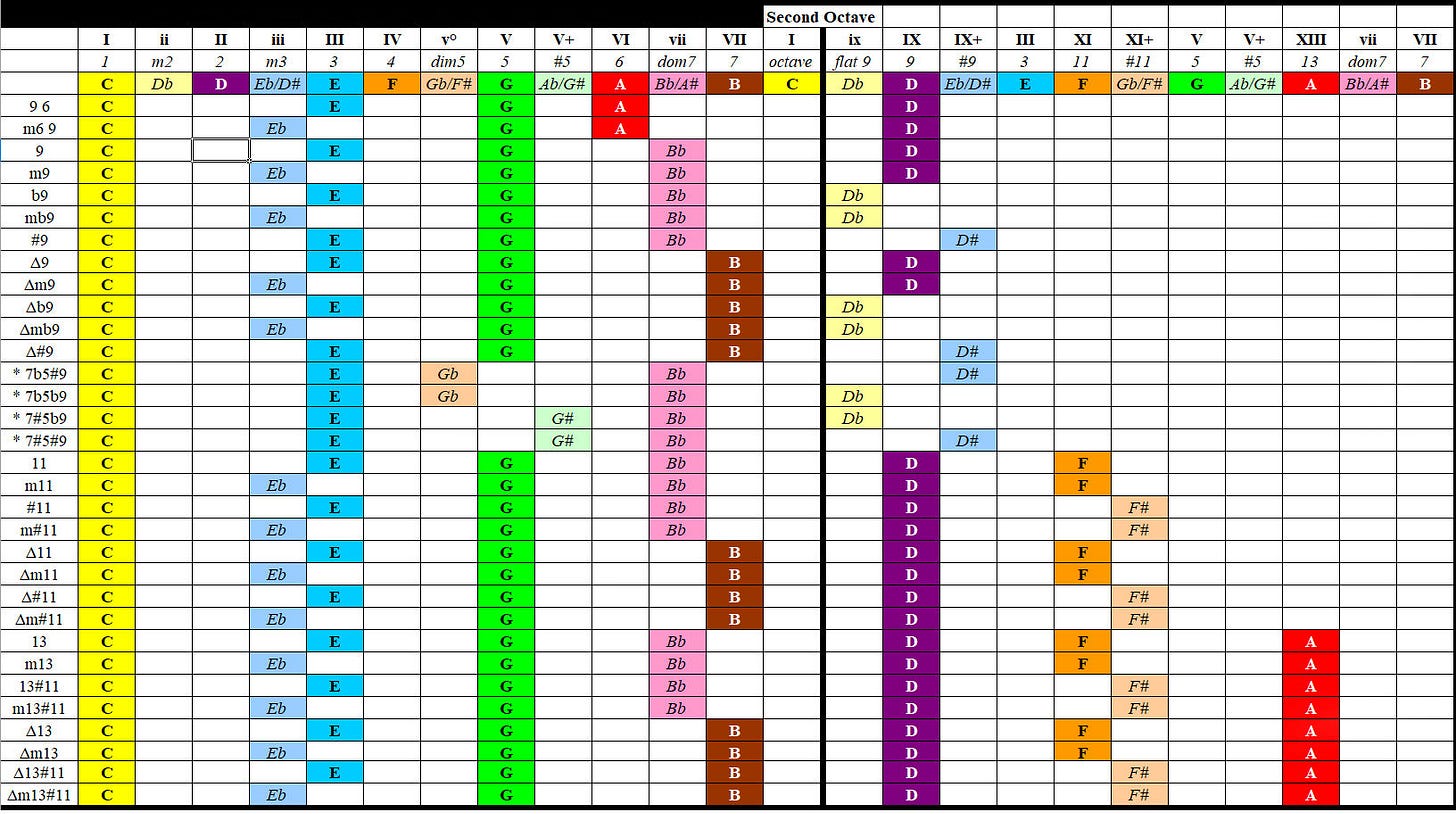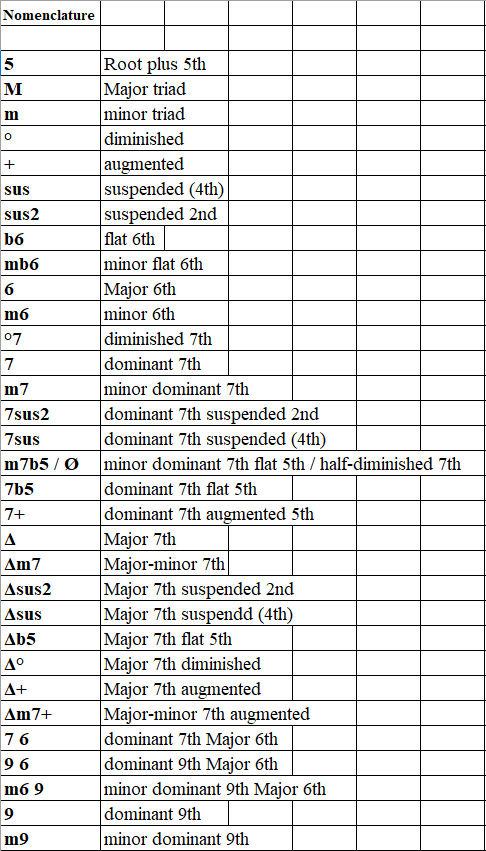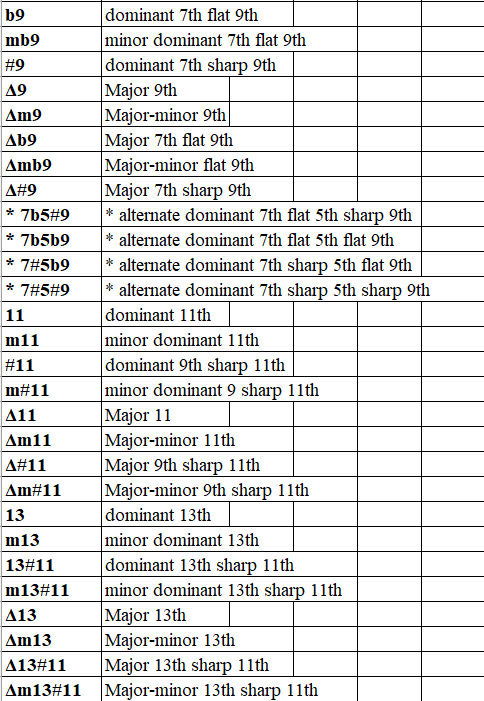I was where you are for a long time. I knew lots of chords, but I didn't know enough basic music theory to understand what it was I was actually playing in those chords. I didn't really understand chord structure or how to change chords into completely different chords by moving only a note or two. The very idea of anything past a "7" chord was intimidating to me. Extended chords like 9's, 11's and 13's were far beyond my grasp of understanding. Or so I thought.
What do you need to know?
#1. You need to have an almost 100% complete knowledge of every note location on your guitar fretboard - from the open strings to the twelfth fret and sometimes beyond. This means knowing the location of every natural and enharmonic note.
#2. You will need to understand basic chord structures from a "5th" chord (power or rock chords) to seventh chords, including "Major 7th", "minor 7th" and "dominant 7th". This means understanding what is needed to build these types of chords from basic triads to four-note chords. It also helps to understand "6th" chords as substitutions for 7th chords. (“Jazz” and/or “extended” chords will require more study on their structures as they are generally built on notes in the second octave.)
#3. You will also need to understand the circle of 5th's/4th's, and how it relates to keys in music, and knowing all seven chords in each of the twelve keys used in guitar theory.
#4. Understanding voicings and inversions is also very important. This means knowing how to substitute notes in chords by moving, adding or replacing other notes - and understanding how to build a chord using notes available in comfortable fingering. There are some chords that do not require all of the notes used to build a chord. You will need to know how to move notes around in a chord structure so that they can be used logistically in a progression, or by moving them so that their voicings make sense melodically as well as harmonically.
Okay, with that said...let's start off with #1 - Learning the fretboard.
There are several ways that you can practice learning the entire fretboard of your guitar. If you think in terms of only using the notes from the open string to the 12th fret, you will have a total of 12 different notes:
Open, 1st, 2nd, 3rd, 4th, 5th, 6th, 7th, 8th, 9th, 10th, 11th and 12th. Multiply that by six strings and you have 78 notes.
What most people sometimes don't realize is that many of the notes are redundant - meaning that the same note can be played in other places on the fretboard. This is referred to as the "relative concept". The piano or keyboard only has one place to play one note - this is known as the "linear concept".
For example:
On your guitar, if you play the octave note of middle "C" on the 6th string, it will be located on the 20th fret. If you play the exact same note on the 5th string, it will be located on the 15th fret. On the 4th string, that note will be located on the 10th fret. On the 3rd string, it is located on the 5th fret. On the 2nd string, it is located on the 1st fret. Same note, five different places on your fretboard. Chances are, you are most likely going to play that note on the lower frets, as you are rarely if ever playing notes on the 15th or 20th fret.
Another way to look at redundancy on the fretboard is to play the "A" on the 5th fret of string 6, then play the open 5th string "A". It's the same exact note. It is also the only two places on the fretboard, that particular "A" note can be played. Play the "D" on the 5th fret of the 5th string and it will match the open 4th string. However, you can also play this note on the 10th fret of the 6th string. So, suffice it to say, there are patterns all across and up and down the entire fretboard that are available for you to memorize.
How do you memorize the location of all of these 72 notes on the fretboard?
I tell all of my students to learn the location of each of the twelve notes in the circle of fifths, starting with the top of the circle at "C". Spend a week learning where all of the "C" notes are located on all six strings between the open strings and the twelfth fret. There are only six of them. Once you have the locations of those six notes memorized, move onto the next key note, "G". There are seven "G's" between the open strings and the twelfth fret. Remember the 3rd string is a "G" note. Continue on to the D, then the A and E and so on until you get all the way around the circle to "F".
Here is a diagram of all of the notes on the fretboard including their enharmonic equivalent.
Practice playing each of the notes in the following order starting on the 6th string and ending on the 1st string:
C - G - D - A - E - B - F#/Gb - Db/C# - Ab/G# - Eb/D# - Bb/A# - F.
Next we have #2 - Learning chord structures.
All of the following chords are built with the root note “C”.
Triads, 6th and 7th chords:
7th’s, 9th’s, 11th’s and 13th’s.
Chord structure nomenclature:
This concludes this Part 1 of 3.
Part 2 and 3 of 3 will be posted soon.


